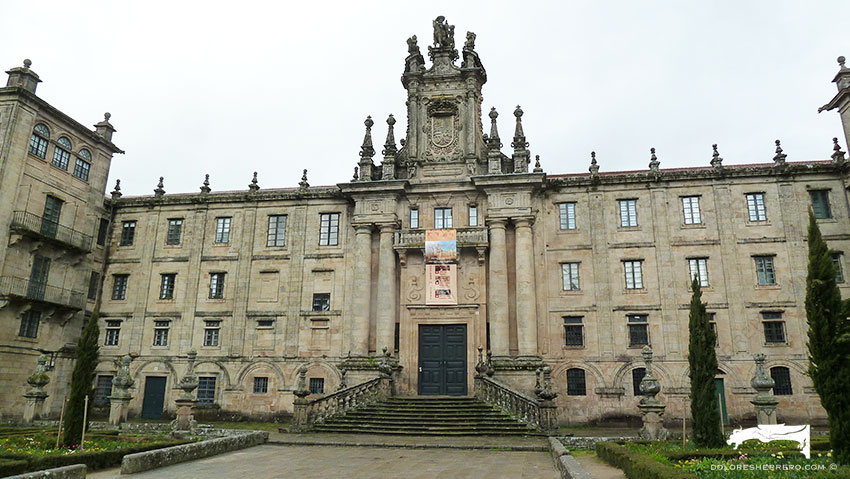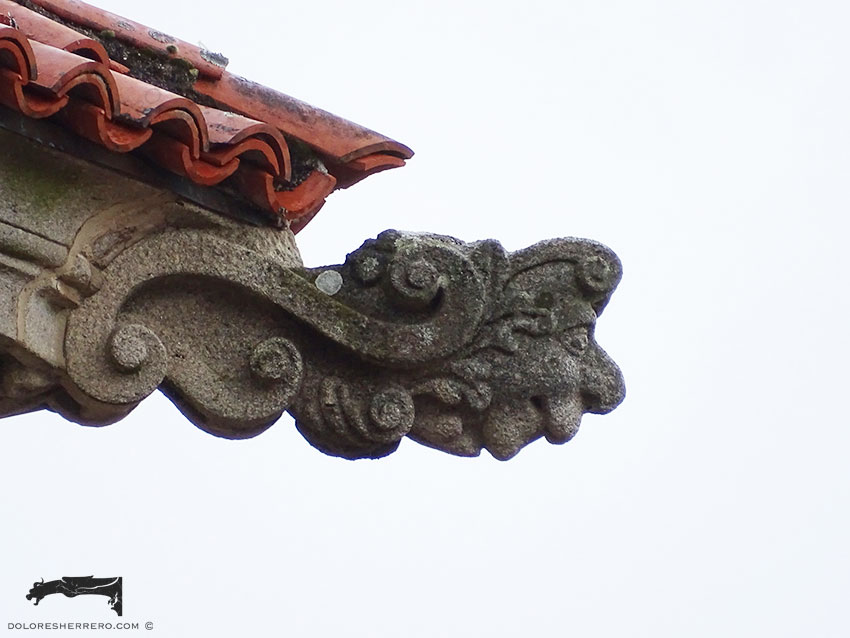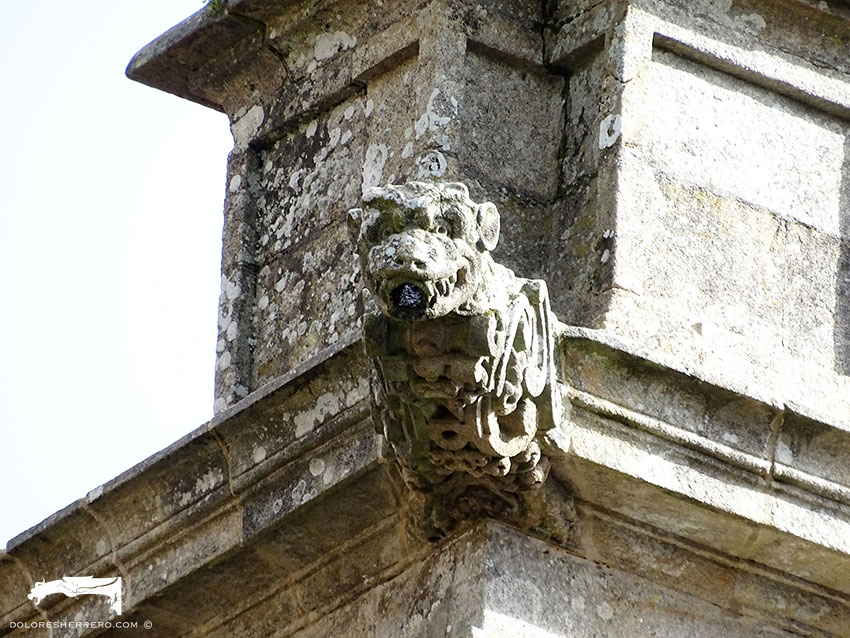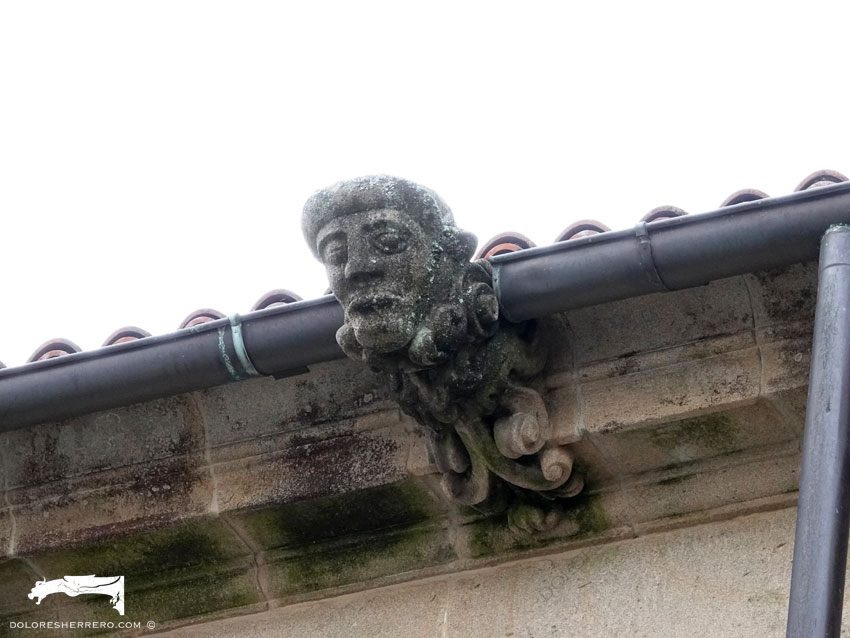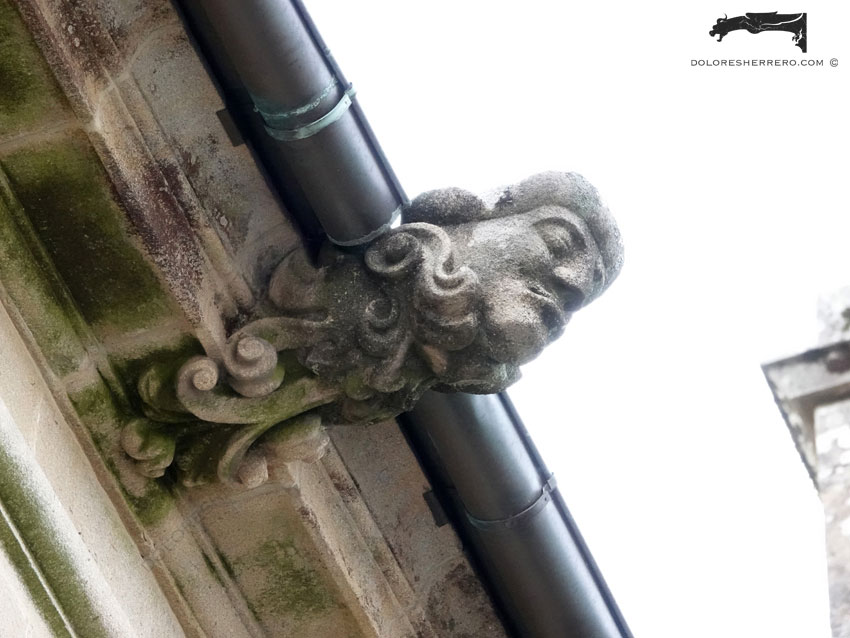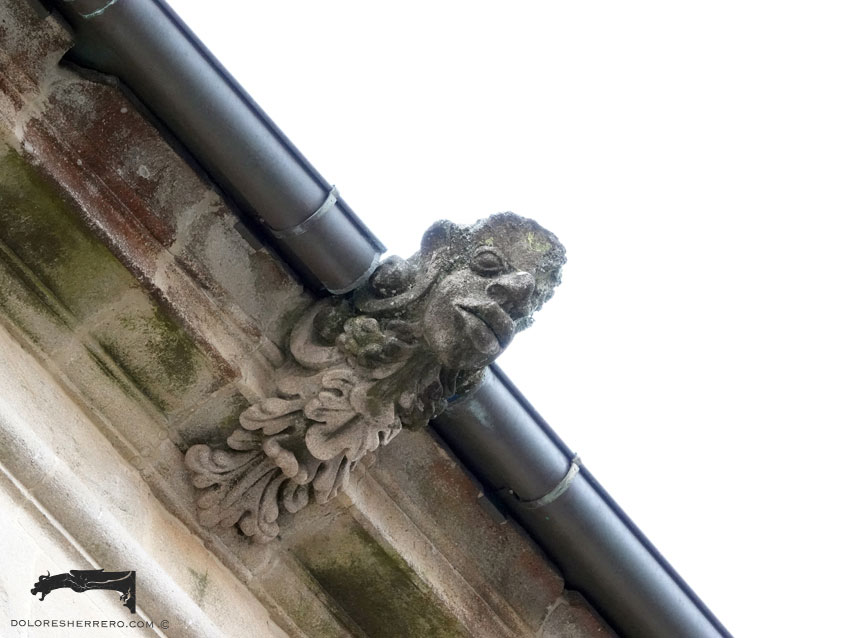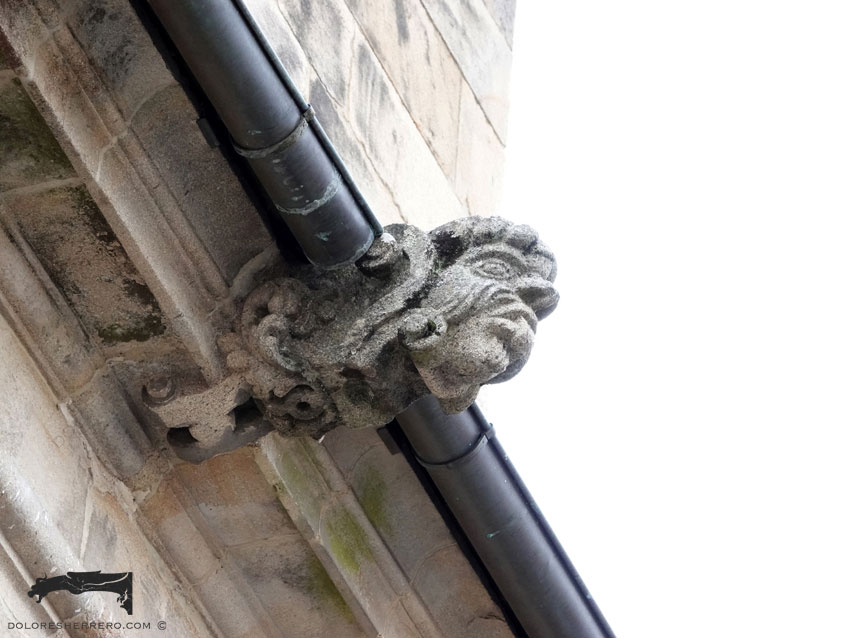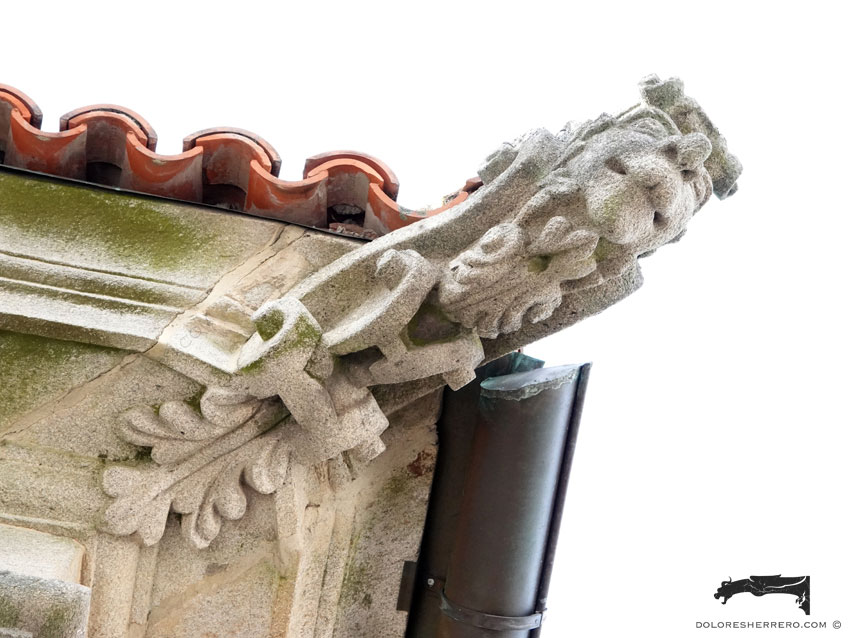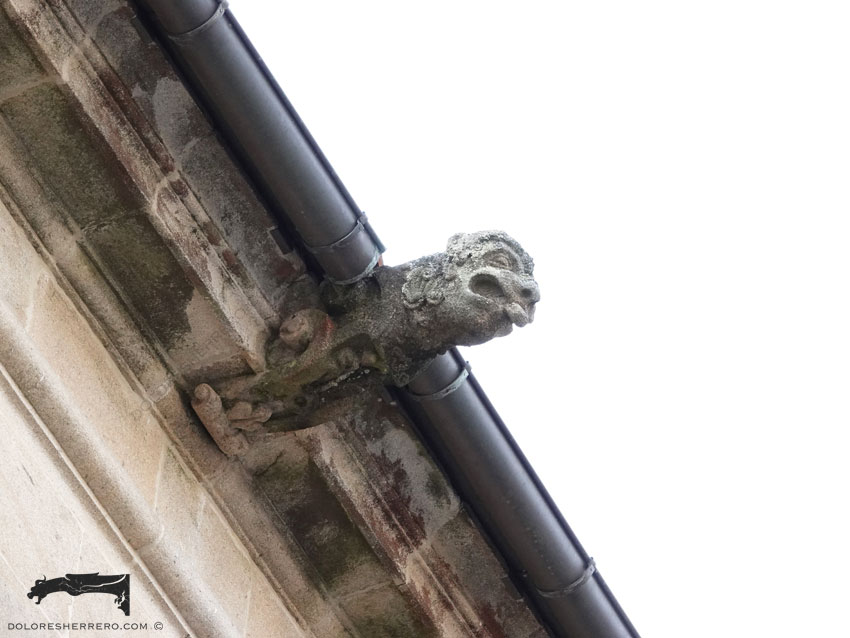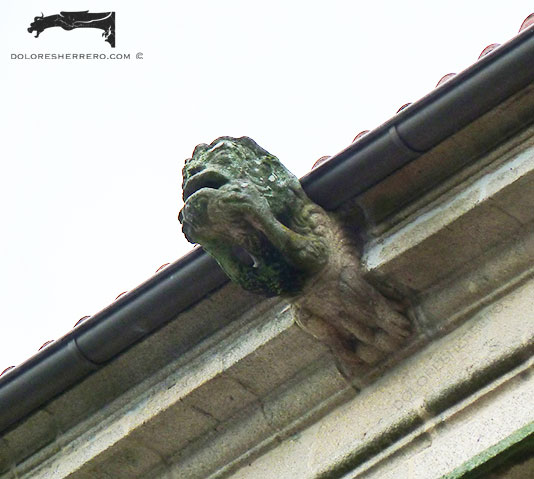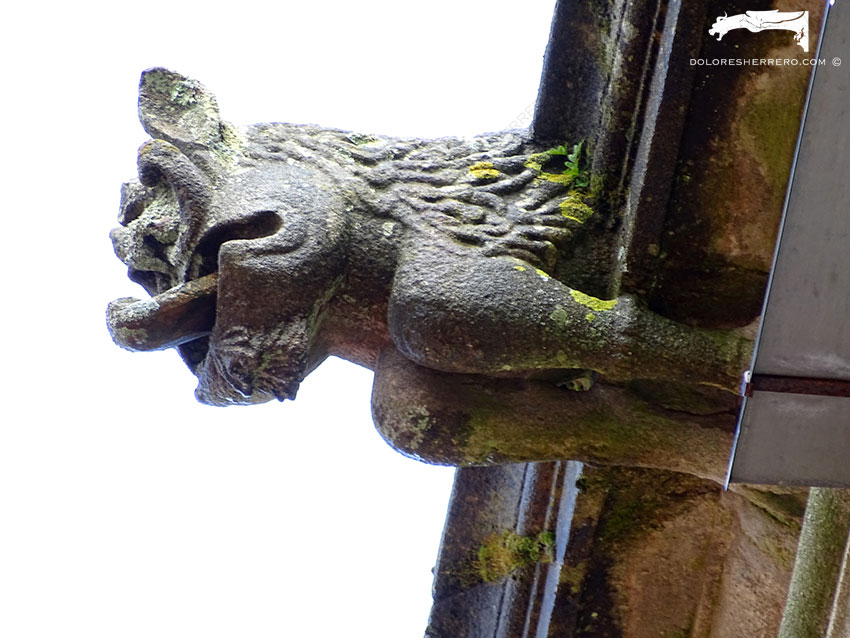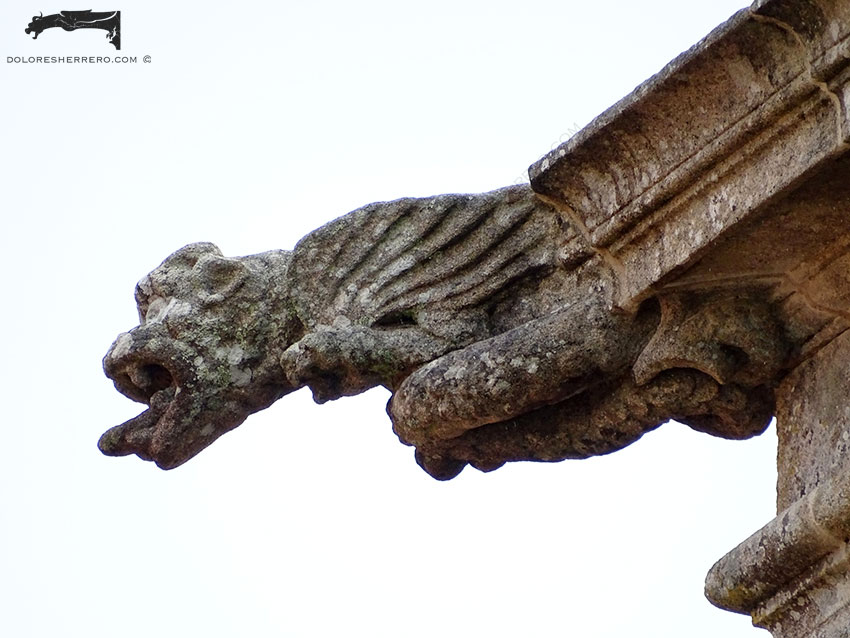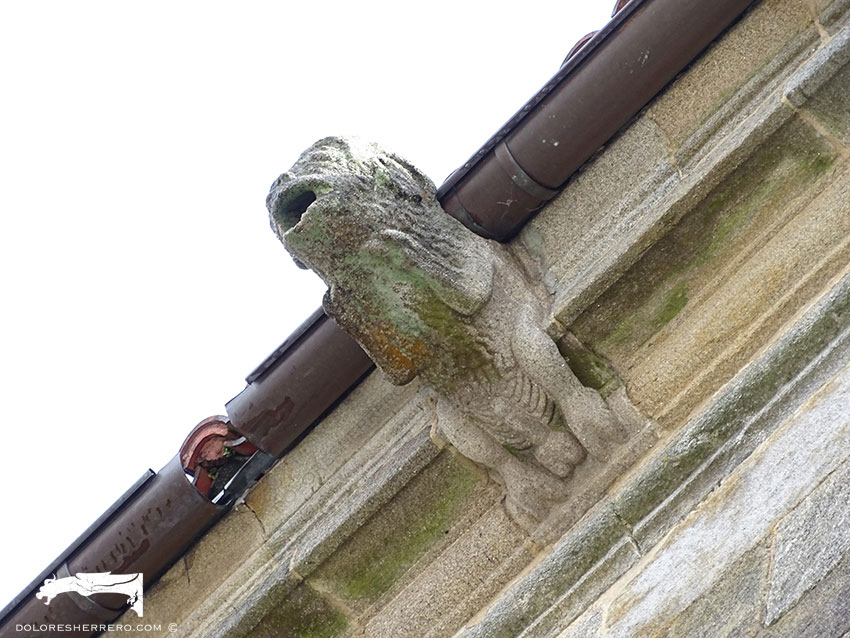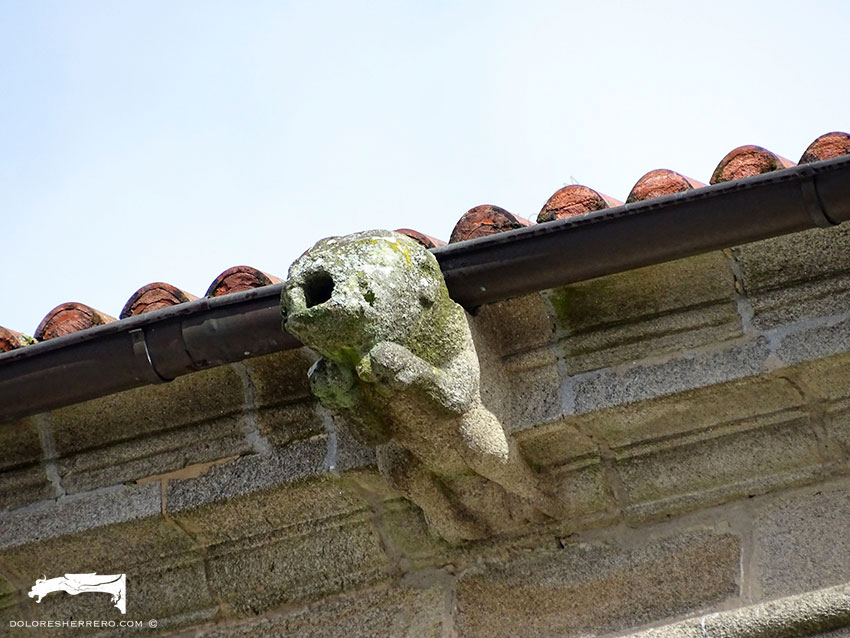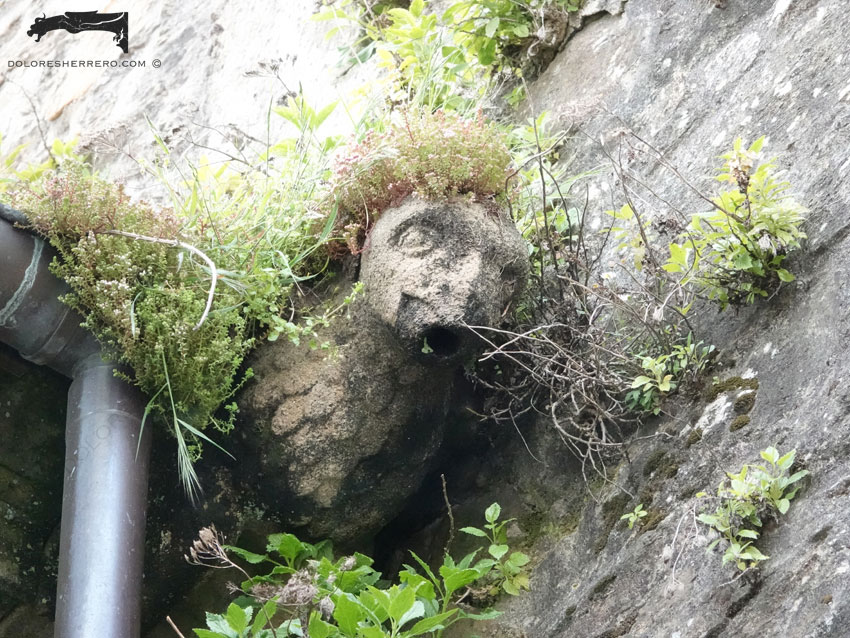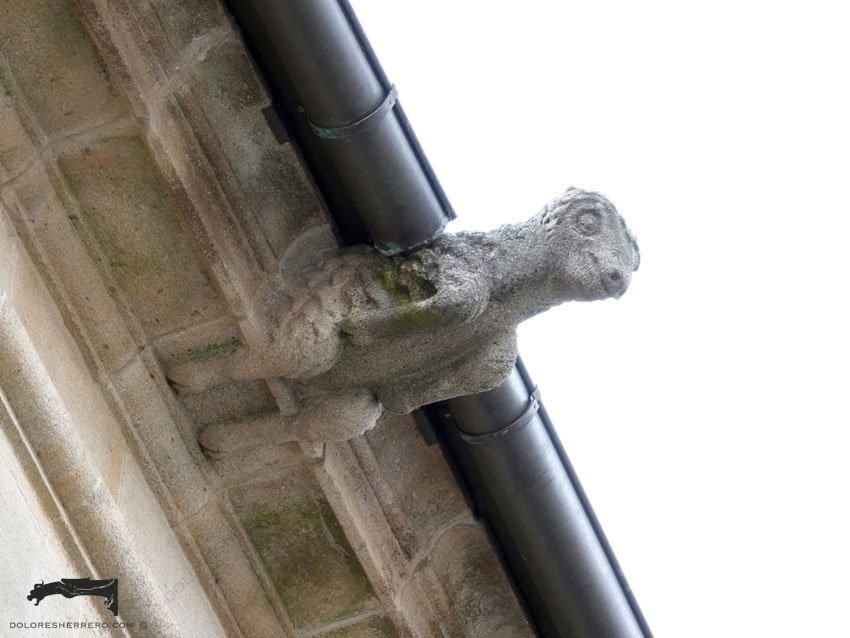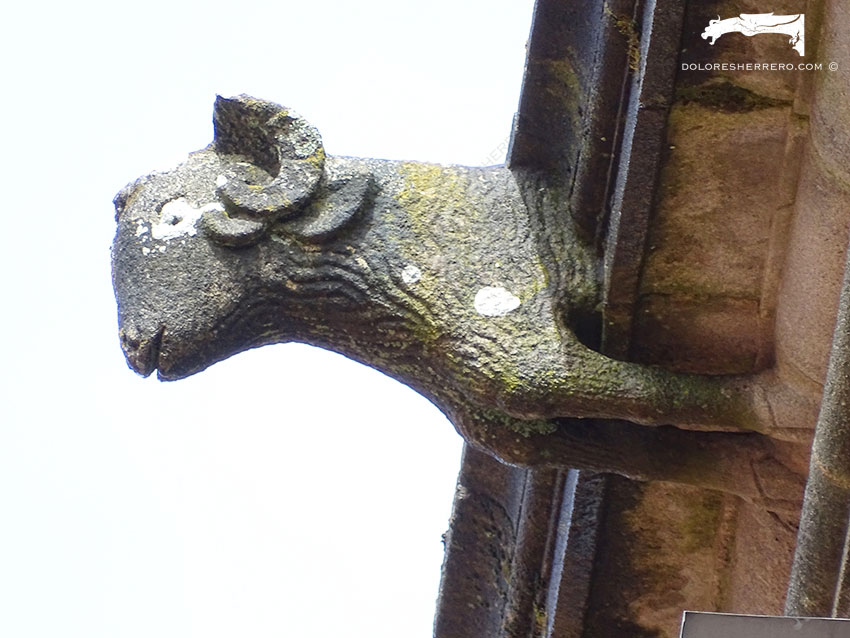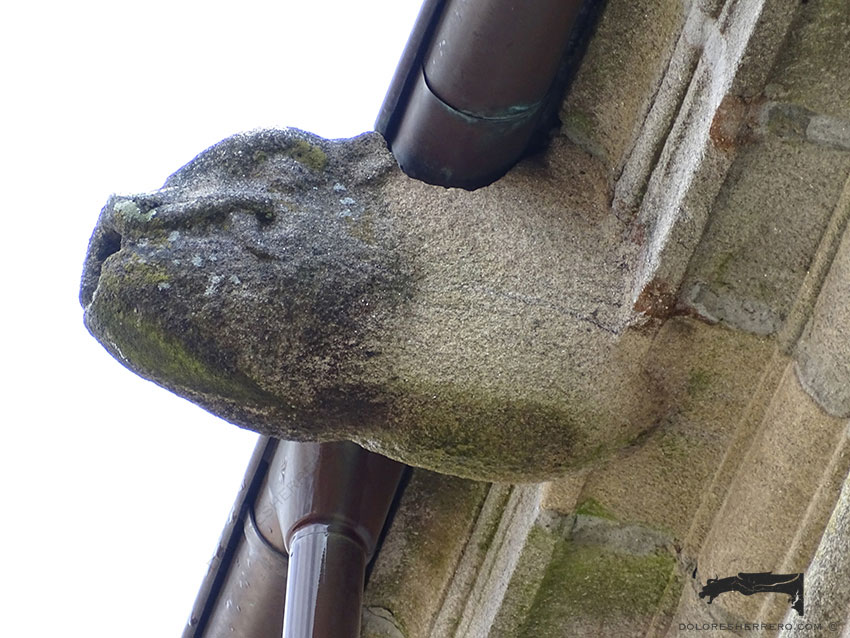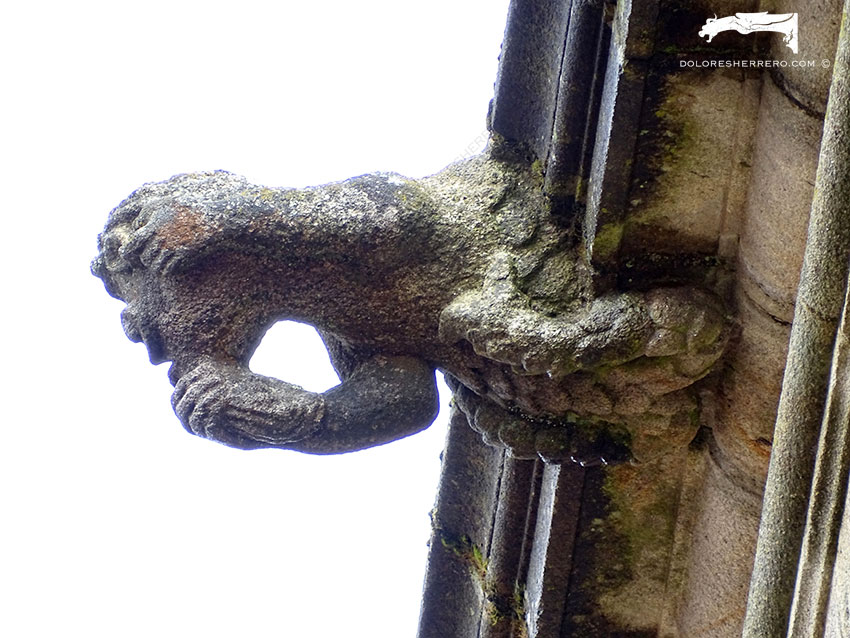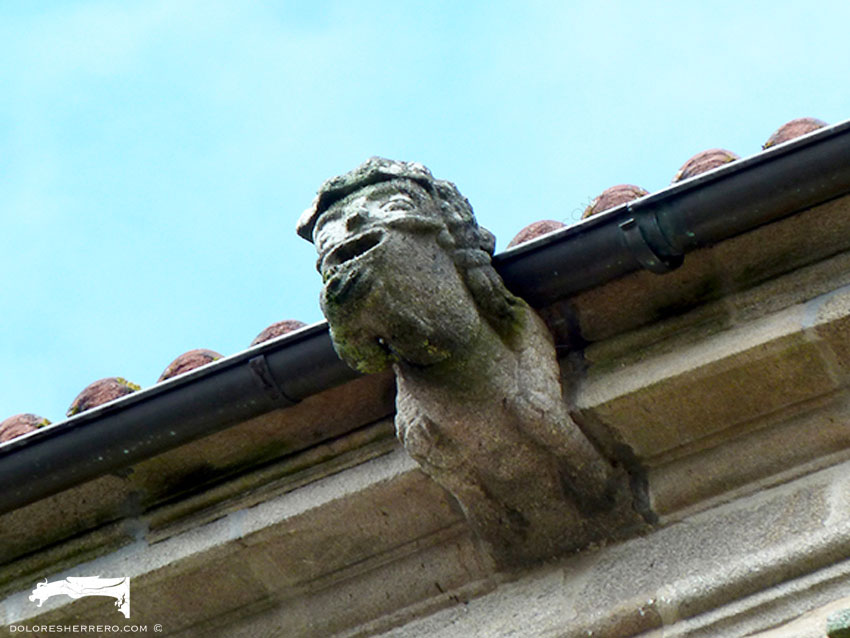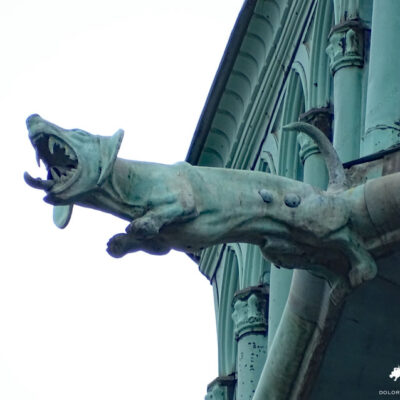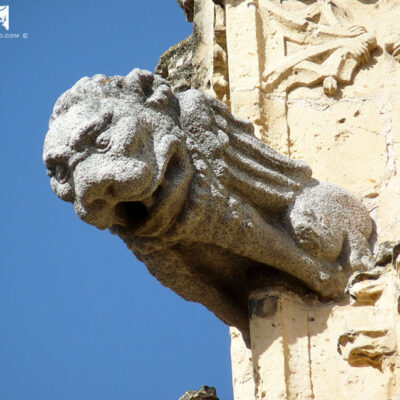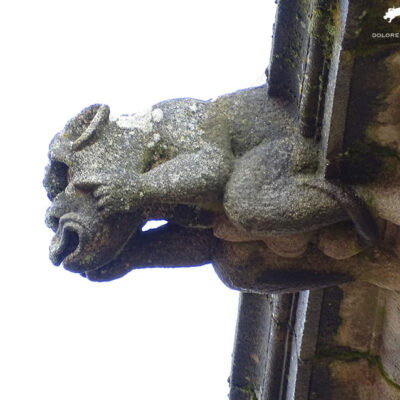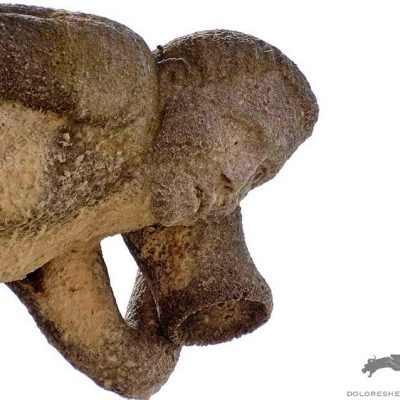We make our first stop on Galician soil in a beautiful place, the only one of its kind in the world, Santiago de Compostela.
Like its monuments, the beauty and uniqueness of its gargoyles really captivates passers-by as they explore this lovely, charming city.
In this first post we’ll be looking at the gargoyles on one of the biggest monasteries in Europe and also one of the most prized monuments of the Galician Baroque period.
A few metres away from the cathedral’s Azabachería doorway and facing Plaza de la Inmaculada, stands the magnificent San Martín Pinario monastery. Although it was originally a 10th century Benedictine monastery, it was rebuilt in the late 16th century and completed in the 18th century. By the late 19th century the building was no longer used as a monastery and is now occupied by the Main Seminary in the Santiago Archdiocese, the Compostelan Theological Institute and the Diocesan Archive. Its rooms are also used for other purposes, including the University School for Social Work and Theology, as a guest house and for hosting cultural events.
Gargoyles
The huge quantity of gargoyles all around the building means we have to show them to you in two posts; we don’t want you to miss any of them, as they’re worth looking at. Among them, there are also figures of grotesques.
The typology is fascinating. We see very original and fantastic gargoyles. The bodies are decorated with plant, geometric, spiral and double spiral motifs. The spiral was a pattern used frequently in Antiquity and symbolises extension and evolution. The double opposed coil spiral (in S) symbolises changes in the lunar cycle and in thunder. The heads depict a green man, a ram, a monster.
There are also quadruped figures with distinctive fantastic features: plant motifs and spirals like fur or wings; one of them is tugging at its mouth, a gesture, as we know, commonly seen in gargoyles and with a number of interpretations (greed, torment, comedy).
Many of these gargoyles, with their combination of plant and fantasy elements are reminders of the Renaissance grotesques, beautifully carved in great detail.
There are also two demons with their own characteristics such as bat-like wings, a protruding tongue, snake’s tail, forehead crest or goatee beard, remarkably expressive figures, one is shown in a rampant position giving the sensation of attack.
The wide-ranging iconography of the gargoyles on the monastery also includes an amazing variety of animals. In this post, we show you two dogs in a rampant position, two birds, as well as a ram, a lamb, a donkey, and a boar. We have already discussed the symbolism of these animals in previous posts. However, let’s remember that the dog is an emblem of vigilance and loyalty. The ram, for the frequency with which it mates, symbolises procreative strength, and Amun, god of fertility in Egypt, also has a ram’s head. The boar is a symbol of lust, chosen by the devil as his incarnation.
Lastly, we have some exceptional gargoyles. The first is a woman with long hair swept back and animal feet, a figure that might be related to the Lumia, a creature from Galician mythology that can have the body of a dragon and the feet of a goose or a goat, and even with the long-haired Moura.
The mermaids or tritons are amazing and display expressive gestures. Research into their symbolism reveals that this is a symbol of deceitful and fatal voluptuousness and the devil that leads to evil.
The other is an amazing harpy, beautifully sculpted. The harpy is an equally malicious, devilish and lustful creature.
All of them are surprising and magical gargoyles.
Creatures with decorative motifs and monsters
- Monasterio de San Martín Pinario (Santiago de Compostela)
- Monasterio de San Martín Pinario (Santiago de Compostela)
- Monasterio de San Martín Pinario (Santiago de Compostela)
- Monasterio de San Martín Pinario (Santiago de Compostela)
- Monasterio de San Martín Pinario (Santiago de Compostela)
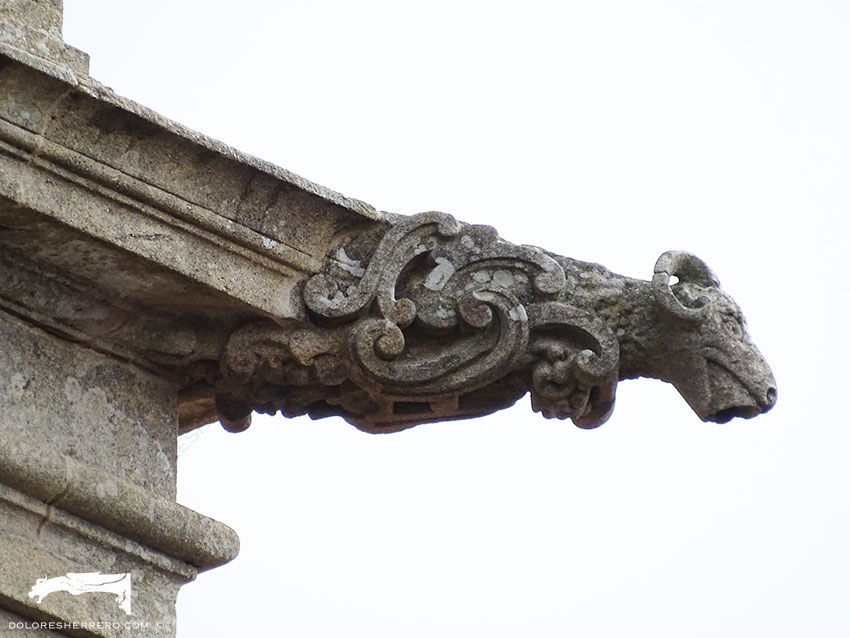
Demons
- Monasterio de San Martín Pinario (Santiago de Compostela)
- Monasterio de San Martín Pinario (Santiago de Compostela)
Animals
- Dog
- Dog
- Bird
- Bird
- Lamb
- Donkey
- Ram
- Boar
Fantastic creatures
- Lumia or moura
- Mermaid or triton
- Mermaid or triton
- Mermaid

Harpy
Land of “trasnos”, “meigas”, “tardos”, “mouras”, “lumias”… no visitor can remain impassive to Santiago de Compostela. On all our trips we come across magnificent gargoyles, although, other than a few exceptions when we find peculiar, unique gargoyles, they are generally similar in terms of their iconography. We could not have imagined what the gargoyles of Santiago would reveal. Its history, traditions and folklore pervade the entire city, its architecture, its Way, its art and of course its gargoyles. They took us back to our childhood with tales of elves and fairies, filled with mystery, magic, fantasy, and excitement, an excitement that we, like many of you, can still feel.
Bibliography consulted
BIEDERMANN, H., Diccionario de símbolos, Barcelona, Ediciones Paidós Ibérica, S. A., 1993.
CALLEJO CABO, J., Hadas. Guía de los seres mágicos de España, Madrid, Editorial EDAF, S. A., 1995.
CHEVALIER, J. y GHEERBRANT, A., Diccionario de los símbolos, Barcelona, Editorial Herder, S. A., 1991.
MARIÑO FERRO, X. R., El simbolismo animal. Creencias y significados en la cultura occidental, Madrid, Ediciones Encuentro, 1996.

Doctor of Art History and researcher specializing in the study of gargoyles.
I am Dolores Herrero Ferrio, and my thesis, “An Approach to the Study of Gargoyles of Gothic Cathedrals in Castilla and León”, is dedicated to the study of these fascinating figures.
If you like gargoyles and art history, you will also enjoy my book, “The Gargoyle and Its Iconography,” a book I have written with great care for those interested in the world of gargoyles.
I have created my own Encyclopedia of Gargoyles, a Gargopedia to share with you, where you will discover all the secrets and wonders of these enigmatic sculptures.
I hope you enjoy this Gargopedia as much as I have enjoyed creating it, and remember that each gargoyle has a story to tell, and here you will discover them all.
